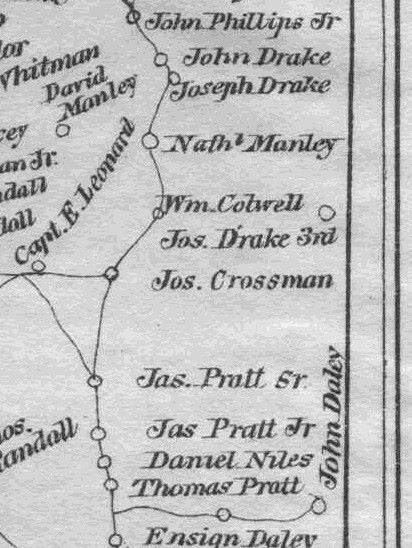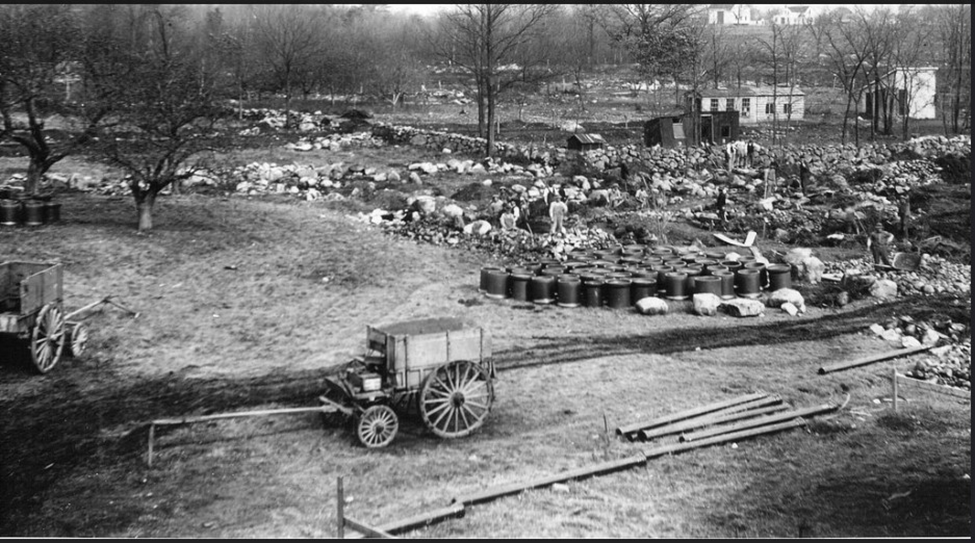|
“The most beautiful experience we can have is the mysterious. It is the fundamental emotion that stands at the cradle of true art and true science.” ― Albert Einstein, Anyone who knows me, knows I love a good mystery. Louise Penny and Kate Ellis aside, one of the reasons I love studying and teaching history is because the study of history is simply uncovering the mysteries of the past. Whether digging into the ground or into a book, there are always intriguing clues, though often only a partial answer is revealed- a glimpse at a long-ago life, culture, reality. Rhododendron Drive. A hint of spring in the air. Stonehill College. I was drawn to the woods at Stonehill College by tales of the John Dailey homestead that was uncovered over 20 years ago by Stonehill professors and students. Beginning in 1999 an excavation was begun ‘deep in the woods’ off Rhododendron Drive, now Blessed Basil Moreau Drive.* John Dailey came to Easton, very early, before 1708. According to Chaffin, “he lived east of the brook near Stone-House Hill, between where the old road once ran and the present road now runs.” He was a hogreeve or hog constable, on the lookout for wandering domestic pigs. The excavated foundation showed Dailey's home to be about 250 square feet. It was also established where the well, animal pens, and midden (refuse heap) were located. The artifacts are archived at Stonehill College. I’m still looking for the site, which was allowed to revert back to nature, (more about that in another newsletter), but over the period of a few days I explored much of the wooded campus, being careful, of course, to stay off of any paved roads. In the lower right-hand corner of this circa 1750 map can be seen John Dailey’s name. His property would have been on the current Stonehill College campus. To the west of Jos. Crossman's would become Main Street and North Easton Village. While it is wonderful and appropriate that many Ames buildings have been renovated and/or repurposed; it is nice to see some artifacts let to 'just be', whether on purpose or by default. The photo below shows abandoned architectural features resting peacefully along Rhododendron Drive. The rhododendrons themselves were imported from England. Leftovers from Stone House Hill House? (Now Donahue Hall.) Seen along the right-hand side of Rhododendron Drive walking from Washington Street. Also mysterious on campus is the collection of huge boulders in an area near the Belmont Street entrance that have been linked to the late 17th century, the era of King Philip, chief of the Wampanoags. Some call it King Philip's Cave and believe King Philip himself hid out there during the First Indian War (1675-6). There was a student excavation at that site in 1957. Additional artifacts are dated to between 1500 BC and 500 AD. Some ‘cave-like’ formations. The area was strewn with large boulders. There was graffiti on some, and remains of a campfire nearby. Still more to learn- off St Andre Drive, also near Belmont Street, are examples of millstones that were quarried and carved for the J.O. Dean Grist Mill that was located at the intersection of Route 138 and Depot St. Only hand tools were used to carve them. One of several millstones, some unfinished. This expedition is over for now, but stay tuned for more mysteries- of another nature altogether! “The possession of knowledge does not kill the sense of wonder and mystery. There is always more mystery.” ― Anais Nin Anne Wooster Drury [email protected] *Basil Moreau (1799-1873) was the founder of the Congregation of the Holy Cross. The Congregation purchased the estate of Frederick Lothrop Ames in 1935 to be used as a seminary. Stonehill College was founded in 1948. Some information was gathered from the Stonehill Alumni Magazine, Fall 1999, and stonehillcollege.edu.
1 Comment
Grace McKearin
3/25/2023 01:21:34 pm
I always loved driving into Stonehill via the rhododendron drive when we were able to do so. Thanks for the memories, Anne!
Reply
Your comment will be posted after it is approved.
Leave a Reply. |
Author
Anne Wooster Drury Archives
June 2024
Categories |
Easton Historical Society and Museum
PO Box 3
80 Mechanic Street
North Easton, MA 02356
Tel: 508-238-7774
[email protected]







